Can These Bones Live?
The role of relics in the Orthodox world
Many things have undergone a significant shift in perspective for me as I have delved deeper and deeper into Orthodoxy since the spring of 2022, when I began researching my PhD on the faith development of second- and third-generation young adult and adult children of immigrants from southeastern Turkey, specifically the Tur Abdin region, whose families now live in Germany.
I think back on my life before encountering Orthodoxy, when I would have soundly rejected most of what I will write about now. If you had offered me any of this, I would have thought you had no clue and hadn’t studied your Bible if you had offered these daily Orthodox encounters as truth to me. Obviously, this was far from Sola Scriptura and a plain and straightforward interpretation of the sixty-six books of the Bible, which I was willing to accept.
And then came Orthodoxy, and with it, a brand-new world of learning for me. My four years in seminary seemed to be minor starting blocks to the unimaginable depth of actually meeting God. Suddenly, there was the real presence of Christ I experience when I take communion, when the bread and the wine become His very body and blood and nourish my body and soul. There was the presence of the saints who have gone before us, whom I can feel when I venerate them through their depictions on icons, and whose presence I sense as they worship with us during the Holy Qurobo/Divine Liturgy—just two examples of the riches of Orthodoxy that were invading my until then tightly regulated Christian understanding.
Orthodoxy is not something you suddenly acquire and are done with. It’s not like praying the sinner's prayer in evangelicalism. Instead, it is a truly lifelong process of seeking to draw ever closer to God. It is a deep and mystical union with Him that is to be explored by His grace as I commune with Him daily in all aspects of my life. And through His boundless mercy and love, I learn more constantly. I will also add that it is not something I want to ever do by myself. I am eternally grateful for the gift in my life of my spiritual father, who teaches me daily what it means to turn, turn, turn to Christ. Equally important is having an amazing deacon friend in my life who is always at the ready to help me find material when I have questions and to point me to the writings of our Church. May God richly bless them both in this life and in eternity with Him.
Here is another lesson that—in all fairness—is still in progress: the relevance of relics (and also tombs of saints) in the lives of Orthodox faithful. Why am I thinking about this tonight? During June, I had the great blessing of visiting two monasteries here in Arizona. The first was St. Anthony Monastery, a Greek Orthodox monastery in Florence, AZ. The second one was a Russian-Orthodox women's monastery, St. Paisius Monastery, in Safford, AZ. (Also note to self: it may be a good idea to visit these beautiful monasteries outside of the hottest months of the year, as visiting them requires a long skirt, socks, closed shoes, a long-sleeved loose blouse, and a scarf wrapped around the head and neck. See below.)
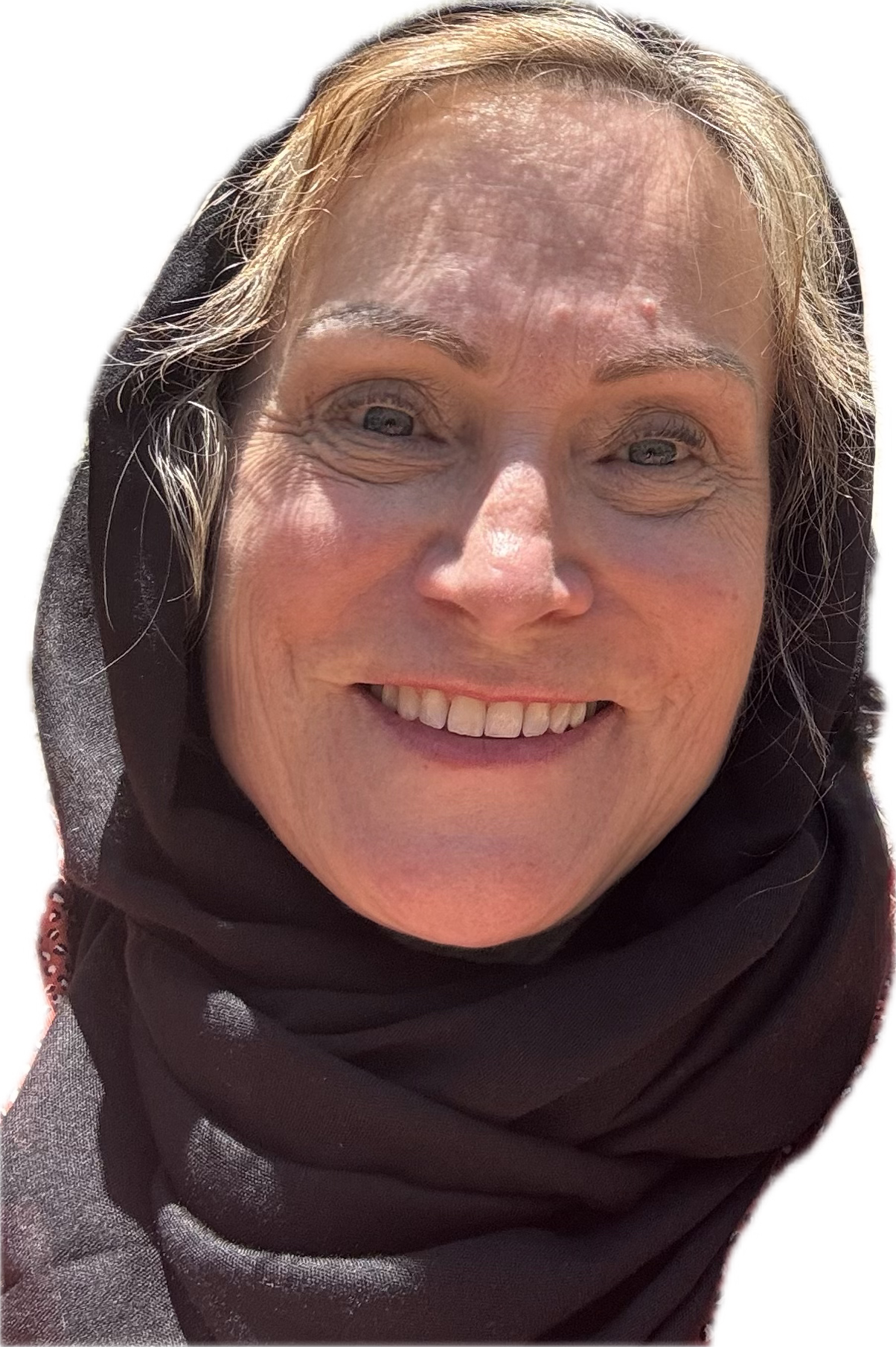
At St. Anthony's, we got to see a number of beautiful chapels. One of the first was St. Menas Chapel, named after St. Menas the Martyr, which holds the tomb of the founder of St. Anthony's Monastery, Elder Ephraim of Arizona. Being able to stop and ask for his blessing at his tomb during our visit was the first “Toto, I have a feeling we are not in Kansas anymore” moment (for my non-American friends, that's a reference to the Wizard of Oz movie, which means things are vastly different from what they were, i.e. this is not evangelicalism). As I took a photo, another lady was praying the Psalms at the tomb. To understand why Orthodox seek the prayers of those they deem to have been saints in their lives (and Elder Ephraim seems to be on the way to being canonized in the Greek Orthodox Church), it is essential to realize that those that have gone before us are not deemed just dead and gone but rather alive with Christ. The late Coptic Orthodox patriarch, H.H. Pope Shenouda III, wrote, “Asking the intercession of the saints implies belief in the life to come; belief that the departed are still living and have their work to perform; belief in the constant relationship between heaven and earth, and belief in venerating the saints who are venerated by God Himself.”1
As we were getting ready to leave this beautiful monastery, the lady at the bookshop pulled me over and said, “If you have ten more minutes, they have just put out the relic of St. Joseph the Hesychast.” This is the spiritual father of Elder Ephraim. St. Joseph played a crucial role in the spiritual development of young Ephraim, as he was a monk on Mt. Athos. St. Joseph reposed in 1959. We immediately made our way to St. Anthony Church, where the relic (St. Joseph’s skull) had indeed been set out for veneration before the Vespers prayers.
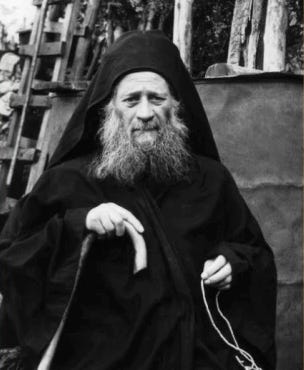
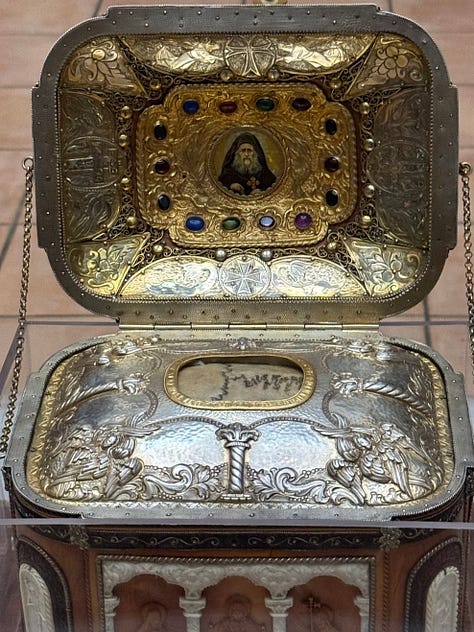
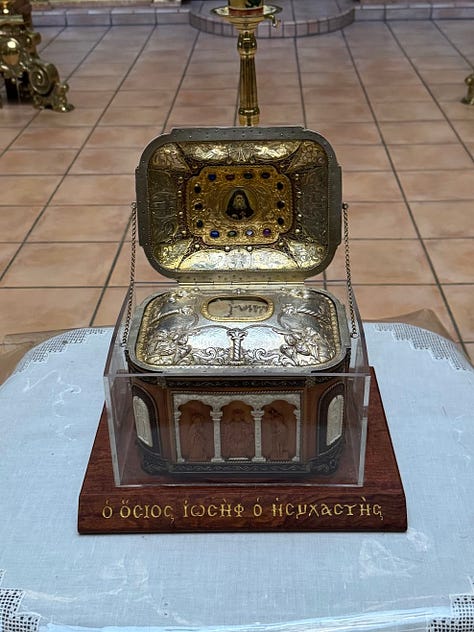
Elder Ephraim had said this about his spiritual father:
Elder Joseph was a spiritual giant and a teacher of noetic prayer taught by God. His love for our dear Panagia was unmatched. For her sake he patiently endured everything, and it was from her that he received the great charism of prayer of the heart. He was counted worthy of seeing her many times in his temporal but angelic life. Alas! Where are people like him nowadays to tell you heavenly words full of grace? His pure heart said the prayer without ceasing: “Lord Jesus Christ, have mercy on me,” and the Holy Spirit was upon his head. . . . I believe that Elder Joseph reached higher levels than St. Silouan the Athonite—much higher, in fact. Nowadays there are no figures like him anymore; he was the last one.2
If you had told me four years ago that I would kiss a skull and ask for St. Joseph's prayer, I would have laughed at you and shaken my head in disbelief. In addition, I would have shuddered at the thought, as I had adopted a Western thinking about distance from dead bodies, which is also entirely foreign to Orthodox Christians. So what changed my mind and had me both kiss St. Joseph's relic and ask for his prayer before God? Reading our Church Fathers and writers, as well as H. H. Pope Shenouda III’s writings.
Here is a quote from the second century about the martyrdom of St. Polycarp in A.D. 156:
“Accordingly, we afterwards took up his bones, as being more precious than the most exquisite jewels, and more purified than gold… deposited them in a fitting place… the Lord shall grant us… to celebrate the anniversary of his martyrdom…”3
St. Ambrose of Milan (A.D. 340-397) wrote about a miracle after the discovery of the relics of Saints Gervasius and Protasius:
“God favoured us, for even the clergy were afraid who were bidden to clear away the earth from the spot before the chancel screen of SS. Felix and Nabor. I found the fitting signs, and on bringing in some on whom hands were to be laid, the power of the holy martyrs became so manifest, that even while I was still silent, one was seized and thrown prostrate at the holy burial-place. We found two men of marvellous stature, such as those of ancient days. All the bones were perfect, and there was much blood. During the whole of those two days there was an enormous concourse of people. Briefly we arranged the whole in order, and as evening was now coming on transferred them to the basilica of Fausta, where watch was kept during the night, and some received the laying on of hands. On the following day we translated the relics to the basilica called Ambrosian. During the translation a blind man was healed.”4
St. Augustine of Hippo (A.D. 354-430) wrote:
“For even now miracles are wrought in the name of Christ, whether by His sacraments or by the prayers or relics of His saints…’5
These are just a few examples of what the Church has passed on through the centuries. But don’t worry, my evangelical readers. I saved Scripture for last. Yes, it is biblical to ascribe miracles to relics.
”As a man was being buried, a marauding band was seen and the man was thrown into the grave of Elisha; as soon as the man touched the bones of Elisha, he came to life and stood on his feet.” - 2 Kings 13:21
And it’s not just bones. In Acts 19:11-12, we read, “God did extraordinary miracles through Paul, so that when the handkerchiefs or aprons that had touched his skin were brought to the sick, their diseases left them, and the evil spirits came out of them.”
As my spiritual father likes to say, you can choose to ignore the saints who are alive with Christ, or you can avail yourself of their prayers. The choice is entirely yours. But why would I not want the prayers of those who are so much closer to Christ than I am while still here on this earth? It is always God's doing in the end, and to Him goes all the praise and glory, but may His saints intercede with Him for us. May you ponder and be blessed by the example of our saints.
Enjoy a few more photos of St. Anthony Monastery and St. Paisius Monastery.
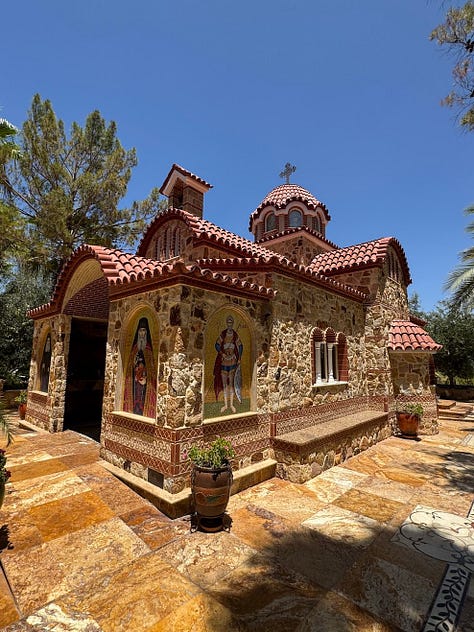
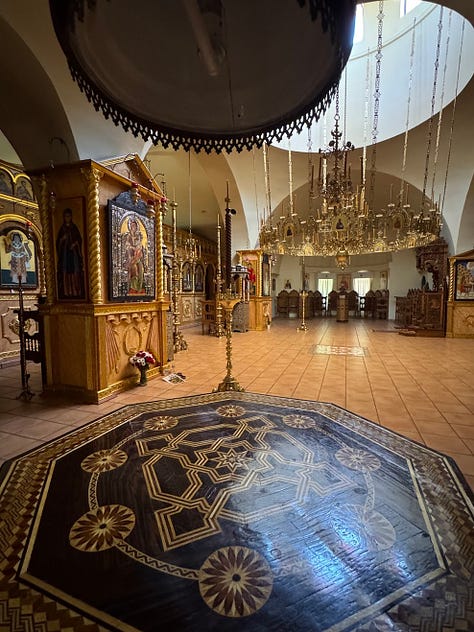
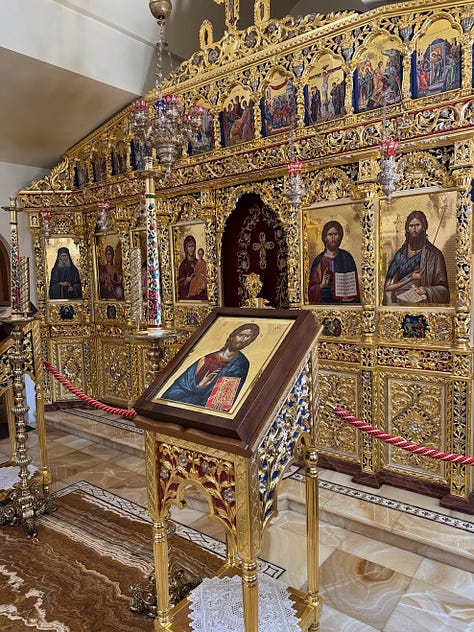

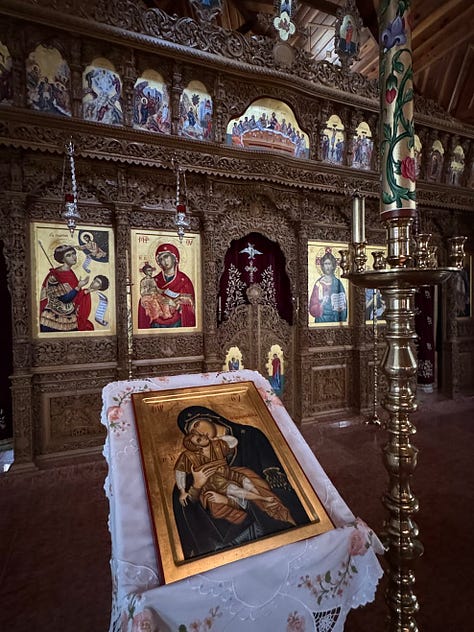
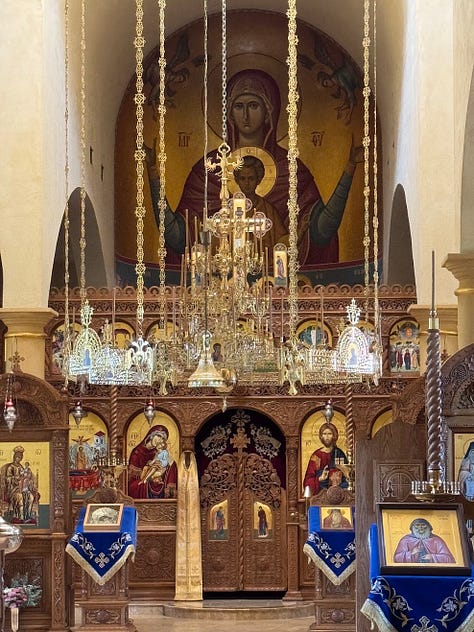
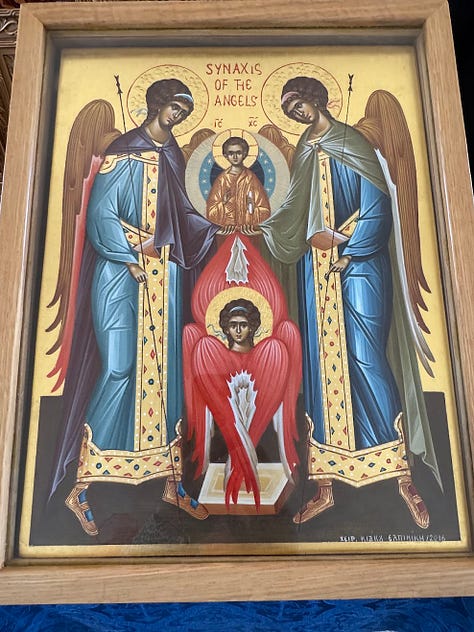
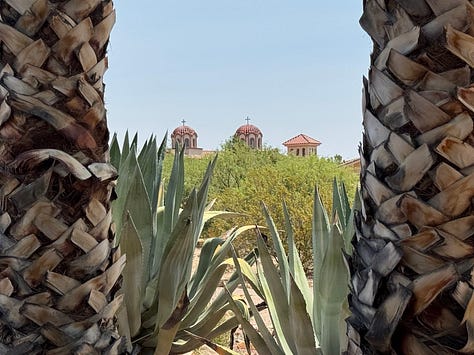
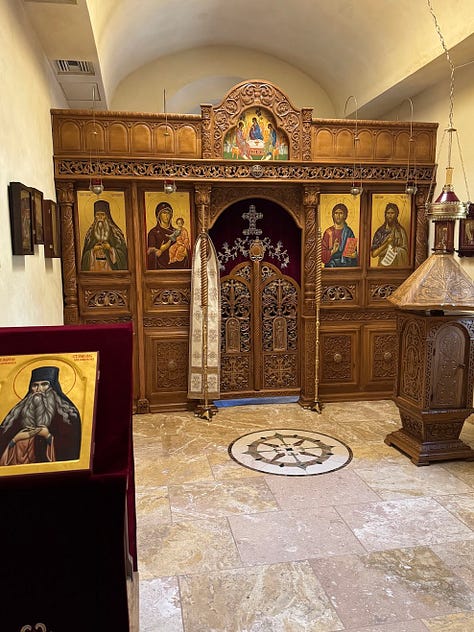
And life at St. Paisius for this weary pilgrim.

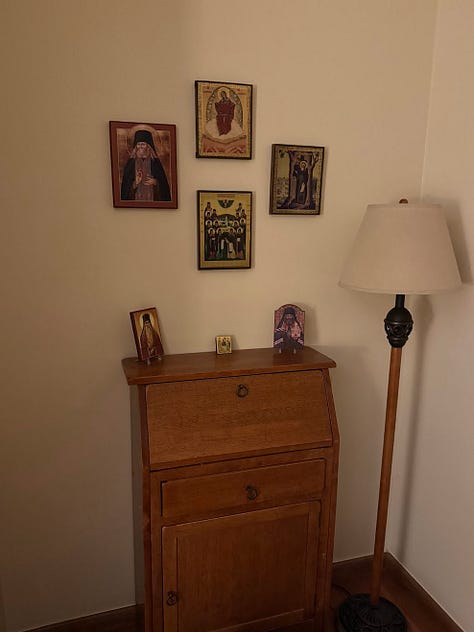

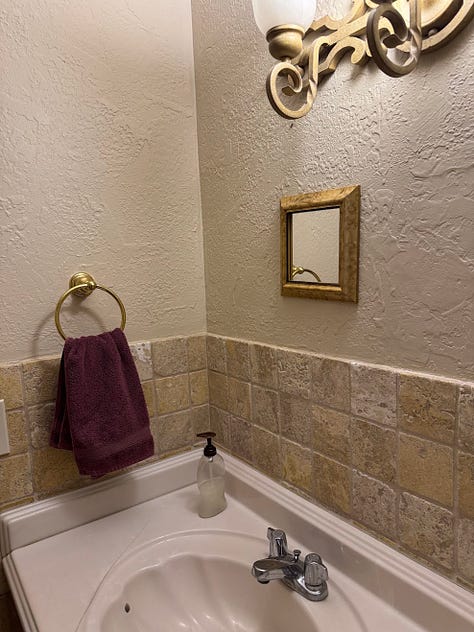
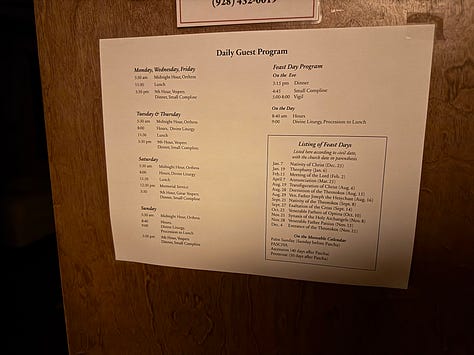
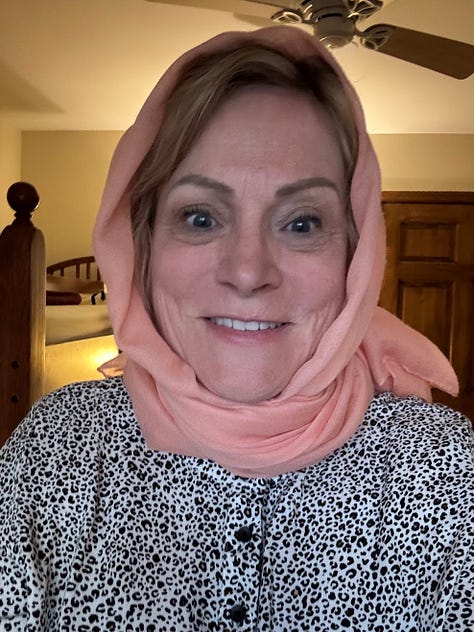
And finally, a few more relics that I have been able to venerate over the past couple of years.
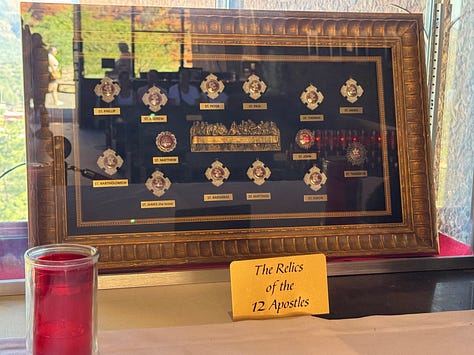
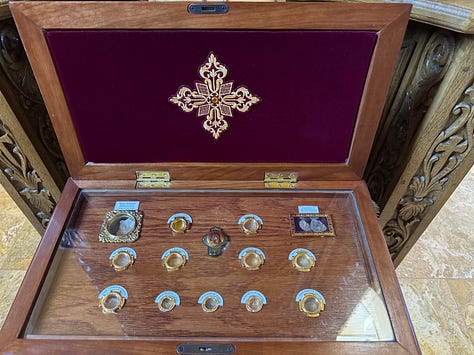
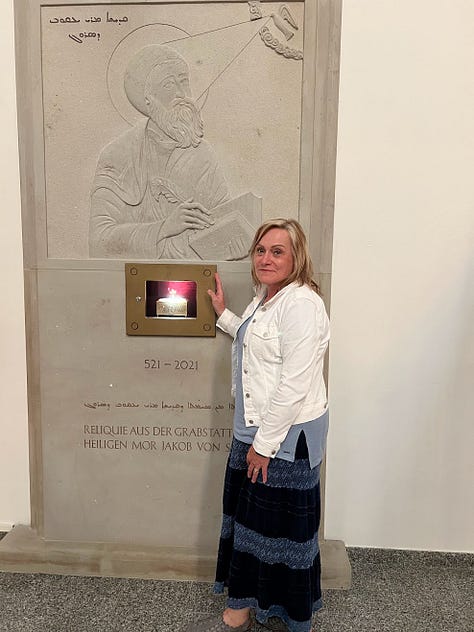
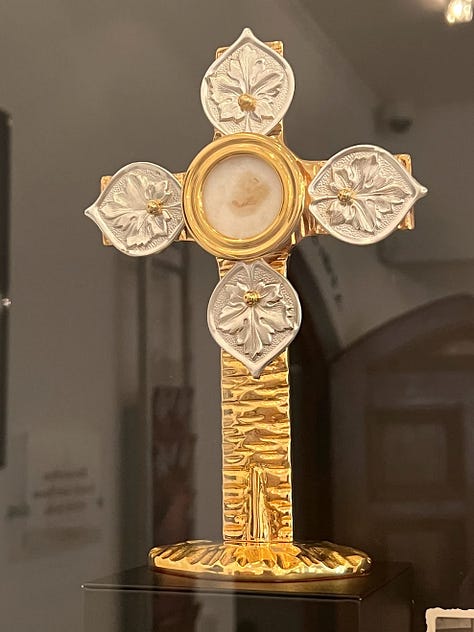
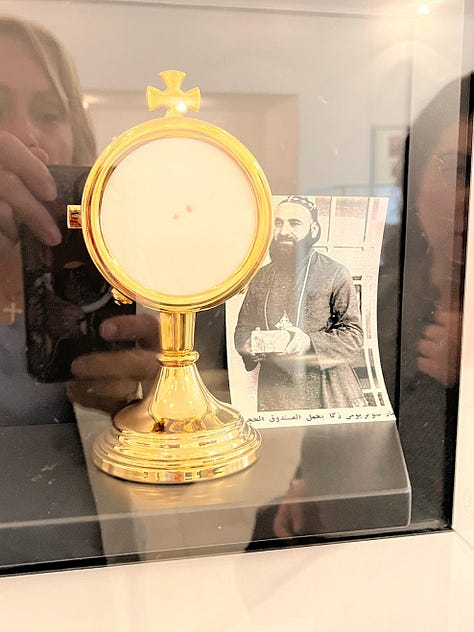
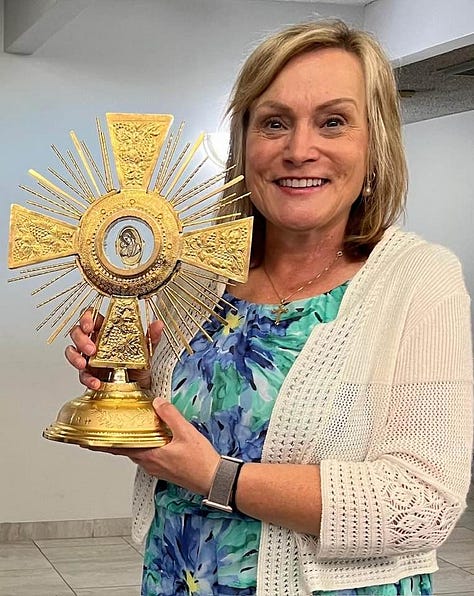
See also https://st-takla.org/books/en/pope-shenouda-iii/comparative-theology/asking-saints.html
From My Elder Joseph the Hesychast by Elder Ephraim, pp. 668-669
Martyrdom of Polycarp, ch. 18 §2–3
Ambrose, Letter 22. https://www.newadvent.org/fathers/340922.htm
City of God, Book XXII, ch. 8


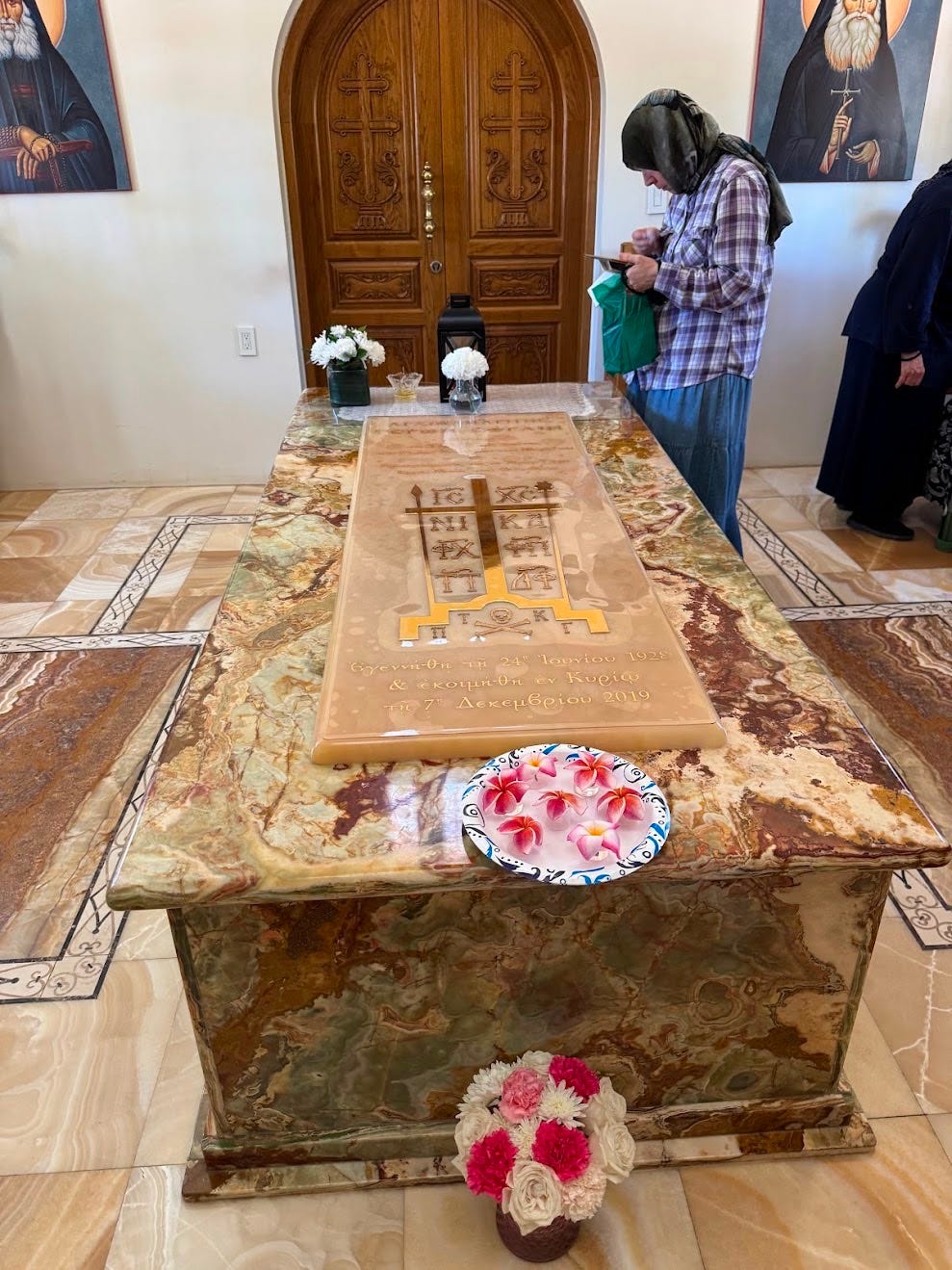
What a blessing! Thank you for sharing your journey and experience. I have yet to visit St Anthony’s. It’s only an hour away from me. You’ve inspired me to plan a trip during one of the cooler months ahead.